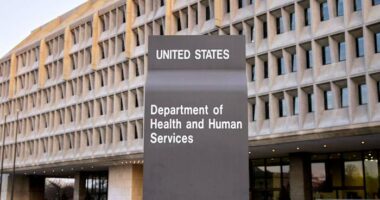Share this @internewscast.com

The acting head of the Federal Emergency Management Agency (FEMA) has announced plans to transfer disaster recovery responsibilities to states for the upcoming hurricane season. This was shared during a staff town hall meeting on Thursday.
David Richardson said his intention was to “return primacy to the states” as part of an agencywide transformation.
This move aligns with the Trump administration’s strategy to undergo a significant change in FEMA’s mission. Richardson stated that for the 2025 “disaster season,” the goal is to enhance states’ capability for response and recovery, while federal assistance would be coordinated “when deemed necessary.”
These remarks are part of a larger initiative by the Trump administration to reorganize and reduce the size of the federal government. The announcement comes just 17 days before the Atlantic hurricane season begins, which is expected to have an above-average 17 named storms and four major hurricanes. Richardson expressed confidence, stating FEMA is “ready for disaster season ’25” to a large extent and plans to submit a strategy to Noem by next Friday.
The agency is in a period of upheaval as the Trump administration weighs its future. President Donald Trump has floated “getting rid of” FEMA altogether, an idea Homeland Security Secretary Kristi Noem has echoed. Richardson replaced former acting chief Cameron Hamilton last week, one day after Hamilton told a congressional committee that he did not think FEMA should be eliminated.
While Richardson downplayed the likelihood that FEMA would disappear altogether, he said his role was to realize Trump’s vision of how disasters are managed, which he said means pushing a “large part” of response and recovery to the states.
Some states, including Florida and Texas, are already adequately prepared for disasters, according to the acting chief. Others should prepare to shoulder more of the financial burden, he said, warning that the typical federal 75% cost share for things like repairing public infrastructure could change as soon as this summer.
“There should be some budgeting things that they have,” said Richardson. “I bet (Texas) Governor Abbott has a rainy-day fund for fires, tornadoes, hurricanes, and he doesn’t spend it on something else.”
FEMA assistance is made available to states when a governor requests and the president approves a major disaster declaration. Those decisions are typically based on whether the event’s impact exceeds the state’s capacity to respond.
Trump has already signaled a departure from typical decision-making around disaster declarations. He has denied requests from Washington and West Virginia. Just this week, he approved a major disaster declaration for storms that struck Arkansas in March after initially denying the request.
The shift comes as the number of climate disasters in the United States grows: There were 90 major disaster declarations in 2024, and 27 climate-related events that caused more than $1 billion in damages.
While states typically lead disaster response, they rely on federal resources as needed, said Jeremy Edwards, FEMA deputy director of public affairs during the Biden Administration, and not every state will be able to take on more of that responsibility.
“It’s unclear what they mean when they say returning primacy to the states,” he said. “What does that mean when certain states don’t have the resources in their own budgets to respond to and recover from catastrophic events?”
Regarding long-term restructuring, Richardson said FEMA will begin a “mission analysis” to ensure its activities are strictly limited to what it is legally mandated to do.
“We will not do anything that is not in the statute,” he said. “If we are, we are wasting the American people’s money.”
Trump has also established a 13-member FEMA review council, chaired by Secretary Noem and Defense Secretary Pete Hegseth, to recommend changes to the agency.
When asked if the reforms would result in further staff reductions, Richardson said it was possible as more of the agency’s functions transfer to states. About 2,000 full-time staff have left the agency since President Donald Trump took office in January, a loss of roughly one-third of the agency’s full-time workforce.
He also said that while no programs were specific “targets” for elimination, much depended on the results of the analysis.
“If you’re outside of the statutory, you’ll become a target, period,” he said.
——-
Anguueira reported from San Diego.
Copyright 2025 The Associated Press. All rights reserved. This material may not be published, broadcast, rewritten or redistributed without permission.












